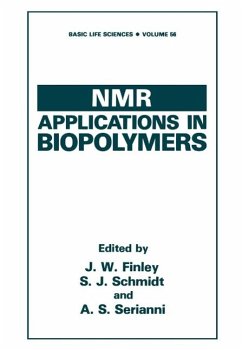Elucidating the structures of biopolymers as they exist in nature has long been a goal of biochemists and biologists. Understanding how these substances interact with themselves, other solutes, and solvents can provide useful insights into many areas of biochemistry, agriculture, food science and medicine. Knowledge of the structure of a protein or complex carbohydrate in its native form provides guidelines for the chemical or genetic modifications often desired to optimize these compounds to specific needs and applications. For example, in the pharmaceutical industry, structure-function relationships involving biopolymers are studied rou tinely as a means to design new drugs and improve their efficacies. The tools to conduct structure investigations of biopolymers at the molecular level are limited in number. Historically X-ray crystallography has been the most attractive method to conduct studies of this type. How ever, X-ray methods can only be applied to highly ordered, crystalline materials, thus obviating studies of solution dynamics that are often critical to attaining a global understanding of biopolymer behavior. In recent years, nuclear magnetic resonance (NMR) spectroscopy has evolved to become a powerful tool to probe the structures of biopolymers in solution and in the solid state. NMR provides a means to study the dynamics of polymers in solution, and to examine the effects of solute, solvent and' other factors~n polymer behavior. With the development of 2D and 3D forms of NMR spectroscopy, it is now possible to assess the solution conforma tions of small proteins, oligonucleotides and oligosaccharides.
Dieser Download kann aus rechtlichen Gründen nur mit Rechnungsadresse in A, B, BG, CY, CZ, D, DK, EW, E, FIN, F, GR, HR, H, IRL, I, LT, L, LR, M, NL, PL, P, R, S, SLO, SK ausgeliefert werden.









